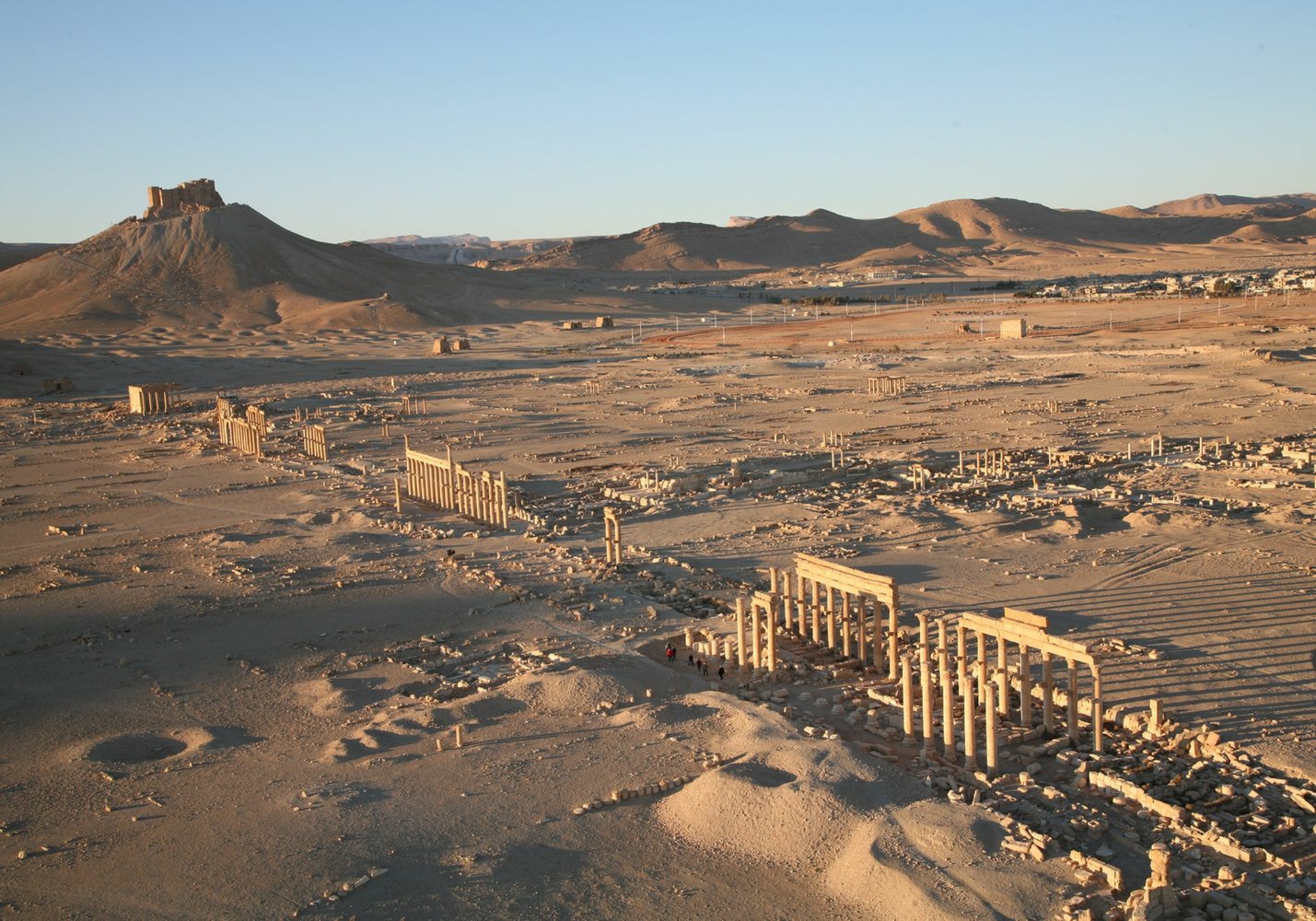


The oasis of Palmyra is in northwest Syria. The city stood at the meeting point of several routes across the desert steppe. It came to prominence in Roman times and was later closely associated with Queen Zenobia.
Wife of Odaenathus, a ruler of Palmyra, queen as consort and then mother of the "king of kings", Zenobia laid claim to the title of empress of Rome, with her son as emperor. Her ultimate defeat at the hands of the Emperor Aurelian followed by her death perpetuated her legend at the expense of history.
There are some magnificent examples of Palmyra's unique syncretic art in the Louvre Museum. The collection includes 92 stone sculptures and 146 tesserae - small terracotta entry tokens for ritual banquets in the city's great sanctuaries.

État du bâtiment en 2016, après sa destruction. Restitution 3D obtenue par traitement photogrammétrique de photos aériennes.
ICONEM/DGAM

Relief depicting Taime and his wife Hadira, dating from the 1st half of the 3rd century CE. Palmyra. H.: 43 cm; L.: 63 cm. Musée du Louvre (AO 2093)
Musée du Louvre. RMN-GP France Collections 3D

In 2017, the University of Lausanne launched, through its Institute of Archeology and Antiquity, a vast project linked to the archives of Paul Collart. Faced with the destruction of Syrian heritage by the Daesh / ISIS group in 2015, the Collart-Palmyre Project wishes, by digitizing all the documents related to the Baalshamîn temple, to help preserve the memory of this world heritage for future generations . Discover more information on the Collart-Palmyre Project, the Baalshamîn sanctuary and the life of Paul Collart at https://wp.unil.ch/collart-palmyre/
© Université de Lausanne. Iconem